Imagine if digital marketing in higher education were a student; it’d probably be the one always trying to sneak the latest tech gadget into class. It’s constantly evolving, always on the edge of the newest trends, and sometimes a bit overwhelming for the traditional classroom setting. But just like any diligent student, digital marketing aims to connect, engage, and make the grade in reaching prospective students. In this rapidly changing landscape, understanding the latest strategies is not just beneficial; it’s essential. And who better to guide you through this digital maze than Plerdy? Their expertise in optimizing user experiences on websites makes them the perfect companion in navigating the complexities of digital marketing in higher education.
Optimizing Analytics for Enhanced Digital Strategy in Higher Education
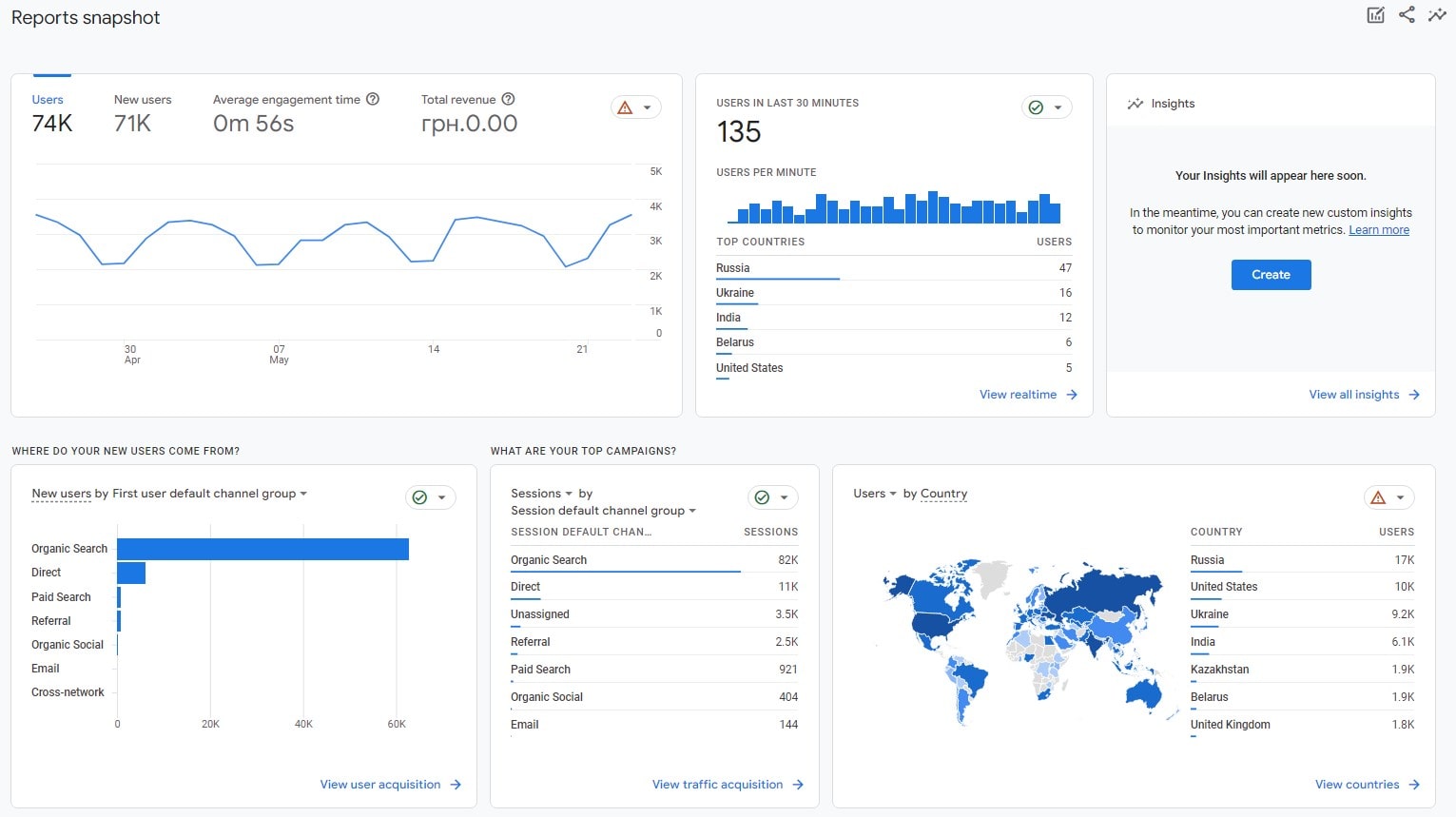
Just as a compass guides a sailor, analytics steer digital marketing strategies in higher education. With the sea of data available, harnessing the right analytics tools is pivotal to effectively navigating the digital landscape.
Transitioning to Google Analytics 4
The leap from Universal Analytics to Google Analytics 4 (GA4) isn’t just a step; it’s a giant leap for higher education marketing. GA4’s focus on user-centric data and cross-platform tracking allows institutions to understand the student journey better than ever before. By leveraging GA4, schools can identify what attracts students, how they interact with digital content, and what ultimately drives their decisions. Implementing GA4 isn’t just about keeping up with Google’s changes; it’s about enriching your strategy with deeper insights.
Leveraging Data for Targeted Strategies
Drowning in data but starving for insights? It’s a common plight in digital marketing. The key is collecting data and transforming it into actionable strategies. This involves analyzing behavioral patterns, engagement rates, and conversion metrics to refine marketing approaches. Tools like Plerdy can be instrumental here, offering heatmaps and user behavior analysis that reveal how prospects interact with your site. By understanding these interactions, institutions can tailor their content, ads, and calls to action to match the interests and needs of their audience. This isn’t just about personalization; it’s about precision. Applying these insights can significantly enhance the effectiveness of PPC campaigns, content marketing, and even social media outreach.
Navigating the Future of Marketing in Higher Education Without Cookies
The horizon of digital marketing in higher education is witnessing a significant transformation as the cookies era ends. This change compels marketers in the realm of higher education to innovate and devise novel strategies for success. Discontinuing third-party cookies doesn’t herald the apocalypse for digital marketing strategies in higher education; instead, it presents an opportunity for a rebirth. This major shift in digital marketing stresses trust and transparency, urging higher education marketers to engage potential students with more real, consent-based approaches.
The Impact of Targeted Marketing in Digital Education
The transition to a cookieless future will revolutionize how higher education institutions target and retarget their audience. With the disappearance of third-party data, the emphasis on collecting first-party data escalates. Motivating visitors of educational websites to voluntarily divulge information by offering engaging content and irresistible calls to action becomes paramount. This strategy not only upholds user privacy but also guarantees that digital marketing efforts in higher education are focused on individuals with genuine interests.
Strategies for First-Party Data Collection in Higher Education Marketing Forging a comprehensive first-party data strategy for digital marketing in higher education encompasses various essential tactics:
- Crafting engaging content that drives sign-ups and subscriptions, seamlessly integrating the worlds of marketing.
- Organizing webinars and virtual open days that necessitate registration is a technique that merges the realms of digital marketing.
- Launching captivating surveys and polls that glean valuable insights while amassing data, a move that marries the objectives of higher education marketing with user engagement.
These strategies deepen a higher education institution’s insight into its audience and lay the groundwork for personalized digital marketing campaigns that honor user privacy. Resources like the IAB’s guide on first-party data become indispensable for those seeking authoritative advice on maneuvering through the post-cookie era in higher education marketing. Through these innovative approaches, the digital marketing sector in higher education is poised to navigate the challenges and opportunities of a cookieless future, ensuring the delivery of targeted, effective, and respectful marketing strategies.
Leveraging AI for Automation in Higher Education Marketing
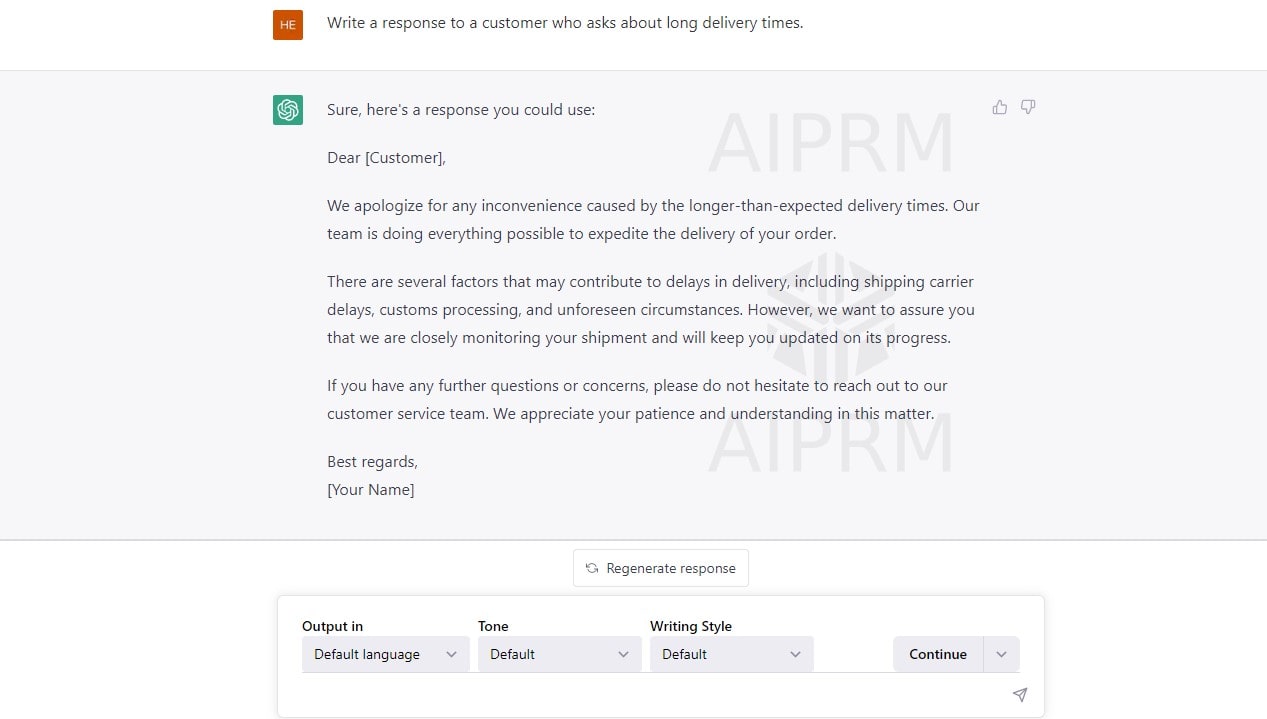
In a world where technology advances rapidly, AI in higher education marketing is a revolution. AI transforms the landscape, making personalized student engagement possible and practical on a large scale.
AI in Content Creation and Personalization
AI’s content creation and personalization are game-changers. Automating content development ensures potential students receive relevant stuff. Tools like Plerdy optimize website content, enhancing user engagement through AI-driven insights. This level of customization ensures that messages resonate deeply, increasing the likelihood of conversion.
Streamlining Processes with Automation
Automation, powered by AI, significantly streamlines marketing operations, from email campaigns to chatbots. These AI-driven systems interact with potential students in real-time, providing immediate answers and guidance. This enhances user experience and frees marketing teams to focus on strategy and creativity.
AI enhances higher education marketing, not replaces it. By automating repetitive tasks and personalizing the user experience, institutions can connect with prospective students more effectively and efficiently. In the digital transformation era, AI is not just a helpful assistant; it’s a critical ally in crafting compelling, customized, and conversational marketing strategies.
Harnessing Short-Form Video’s Power in Digital Marketing for Higher Education
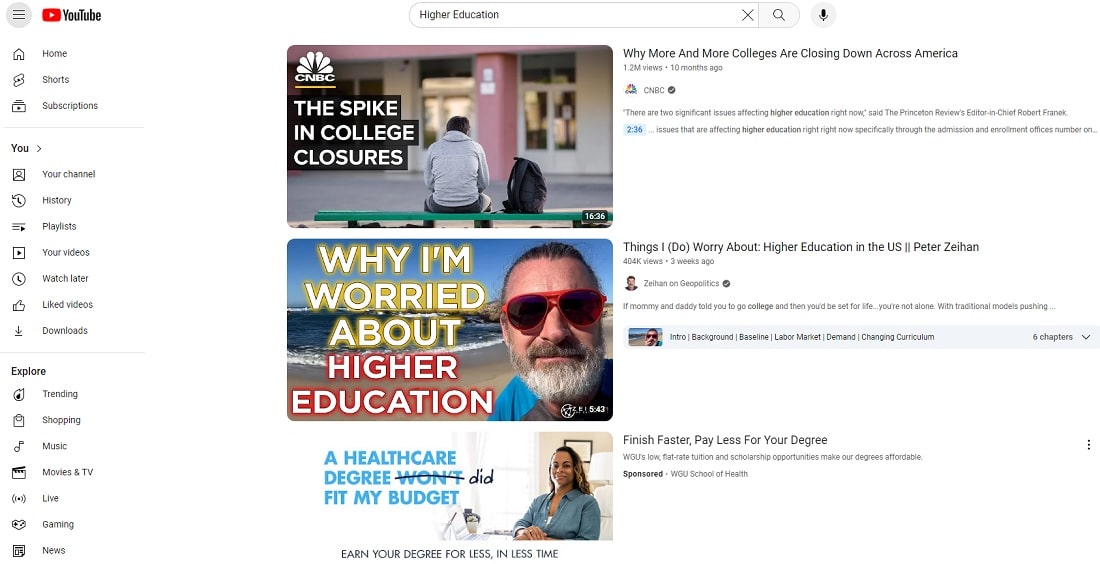
In the swiftly moving currents of today’s digital era, capturing the attention of prospective students is as challenging as seizing a fleeting comet in the night sky. This is precisely where the dynamism of short-form video becomes indispensable in the digital marketing strategies of higher education. These brief clips are far more than just the latest trend; they are potent instruments for storytelling, captivating engagement, and driving conversions in education marketing.
Strategies for Crafting Impactful Short-Form Videos
To forge impactful short-form videos requires more than superior technology; it necessitates crafting a riveting narrative within a brief span. Begin with a brief, clear message, lean into authentic storytelling, and employ vibrant visuals to maintain viewer interest. Higher education institutions should spotlight distinctive campus experiences, share compelling student testimonials, and provide quick glimpses into their academic offerings. The objective is to maximize every moment, delivering content that strikes a chord with potential students and underscores the value of the educational journey.
Triumphs in Digital Marketing within Higher Education through Short-Form Video
Short-form videos’ success tales in digital marketing for higher education are motivating and educational. Colleges and universities leveraging platforms like TikTok and Instagram Reels have observed a noticeable surge in engagement and interest from potential students. Through the portrayal of campus life, student accomplishments, and snippets of daily student experiences, these educational entities foster a sense of community and belonging, even before application submissions. These connections set an institution apart in the competitive field of higher education digital marketing, demonstrating the power of short-form video to connect with the digital-native generation.
Leveraging Responsive and Interactive Ads in Digital Marketing for Higher Education
In the rapidly evolving digital marketing landscape for higher education, responsive and interactive ads stand at the forefront, serving as dynamic conduits that link educational institutions with their future students. These advanced advertising methods transcend mere promotional tactics; they initiate engaging dialogues and cultivate lasting connections between higher education entities and potential learners.
The Benefits of Responsive Ads in Marketing
Responsive ads are ingeniously designed to adapt their dimensions, appearance, and layout to fit any advertising space seamlessly. This ensures that your marketing message for higher education is optimally presented, regardless of the viewing platform. For marketers in the digital sphere of higher education, this adaptability guarantees that your message reaches a broad audience in the most impactful manner, whether displayed on a desktop monitor or a smartphone screen. This strategic flexibility amplifies engagement opportunities with prospective students, significantly enhancing the visibility and appeal of higher education programs.
Crafting Interactive Engagements in Digital Education Marketing
Interactive ads elevate the digital marketing strategy for higher education by transforming passive viewers into active participants. These ads invite users to immerse themselves in customized experiences, from quizzes determining the best-suited academic program to virtual campus tours, fostering a reciprocal communication channel. This interactive approach prolongs a potential student’s duration with your advertisement and strengthens their bond with the educational institution. Employing interactive ads in digital marketing for higher education is a powerful technique to imprint your institution in the minds of potential applicants, thereby boosting the chances of their application submission. Higher education marketers can traverse the digital arena with these unique advertising methods, helping their institutions stand out in the competitive field.
Boosting PPC Efficiency with AI in Digital Higher Education Marketing
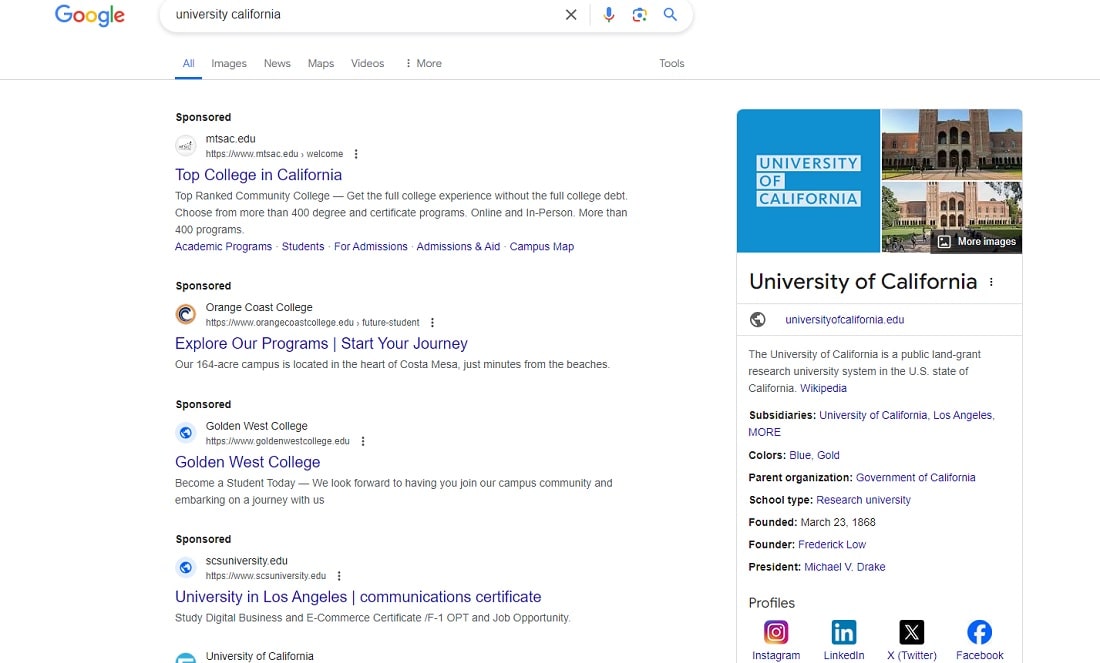
Navigating the vast sea of digital marketing, higher education institutions often seek a beacon to guide their PPC (Pay-Per-Click) campaigns toward more efficient shores. Enter AI: a buzzword and a transformative force in optimizing PPC strategies for the digital academic landscape.
AI Optimization of PPC Campaigns
Integrating AI into PPC campaigns enables precision and learning previously unattainable. By analyzing vast datasets, AI can predict which ads are likely to perform best with specific audiences, adjusting bids in real time to maximize ROI. This dynamic approach ensures that institutions stay within budget and invest in ads that resonate deeply with potential students, making every dollar count.
Analytics for Audience and Keyword Targeting
AI’s prowess extends into deciphering complex patterns in user behavior and search strategies. AI-powered tools can identify emerging keywords and audience segments, offering higher education marketers insights into crafting messages that speak directly to their target demographic’s aspirations and concerns. This targeted strategy enhances engagement rates and drives conversions by connecting with students on a more personal level.
It’s clear that AI in PPC isn’t just about automation; it’s about smart automation. For higher education marketers looking to navigate the complexities of digital advertising, AI offers a powerful toolkit for boosting efficiency, engagement, and enrollment. In this evolving digital age, embracing AI-driven PPC is not just an option but a necessity for institutions aiming to reach their audience effectively and efficiently.
Enhancing Higher Education with Personalized Digital Marketing Experiences
In the vast landscape of digital marketing for higher education, designing an educational institution’s website is akin to constructing its digital campus. It transcends mere architectural aesthetics; it’s fundamentally about crafting an immersive, personalized digital journey for each visitor, akin to a custom-tailored campus tour that aligns with individual interests and aspirations.
Utilizing Data Analytics for Custom Content in Higher Education Marketing
By leveraging advanced data analytics, higher education marketers can delve into the intricacies of visitor behaviors and preferences, unlocking the potential to tailor digital content precisely. This approach facilitates the dynamic customization of website content, from suggesting programs and events to highlighting financial aid options tailored to the visitor’s recent navigations, such as scholarship inquiries or specific academic interests like STEM. Such personalized digital marketing strategies elevate the user experience and forge a stronger bond between prospective students and the higher education institution.
The Impact of Personalized Digital Experiences
The benefits of integrating personalized experiences into digital education marketing are vast and varied. Primarily, they dramatically boost engagement levels, ensuring visitors encounter content that resonates deeply with them. This relevance significantly diminishes bounce rates and encourages a more thorough exploration of the educational offerings, thereby deepening potential students’ engagement with the institution. Moreover, by making every digital interaction meaningful and purpose-driven, personalized content strategies can enhance conversion rates, transforming casual website visits into committed application submissions. The goal is to cultivate a digital realm that mirrors the warmth and customization of the most effective physical campus tours.
The trajectory of digital marketing strategies in higher education is unmistakably steering toward adopting personalized digital experiences. By capitalizing on data analytics for refined content customization, higher education institutions can transform their digital platforms into an environment as inviting and captivating as their physical campuses. In the competitive higher education market, boosting first digital engagement is essential for building lasting relationships and improving recruitment.
Elevating Digital Visibility in Higher Education Through Strategic SEO
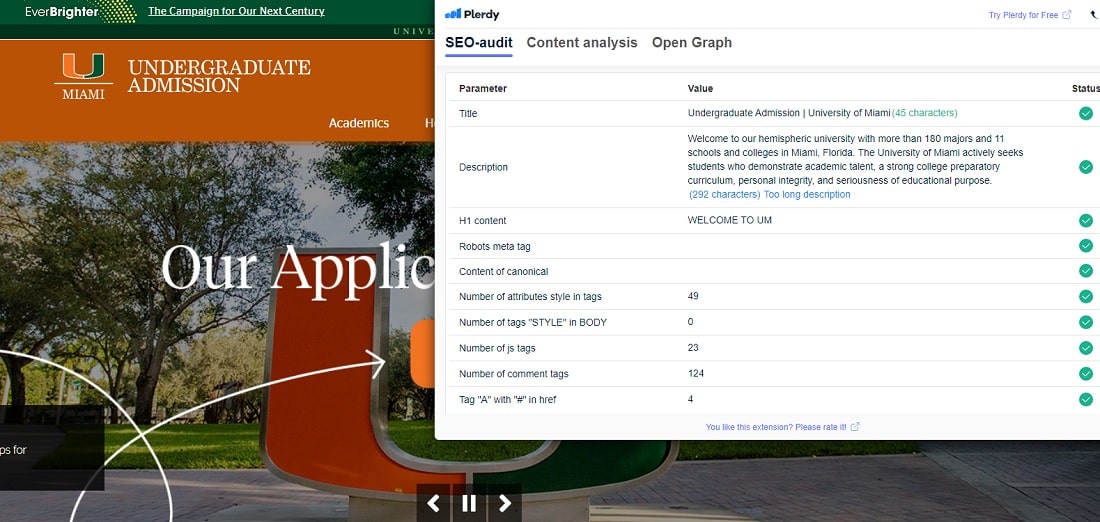
Within the boundless expanse of the internet, a higher education institution’s digital footprint acts as a lighthouse, guiding potential students toward its educational offerings. Elevating digital visibility through SEO in digital marketing for higher education is not merely about visibility; it’s about strategically positioning oneself to be discovered by the ideal audience with precision timing and messaging.
Optimizing for Featured Snippets in Digital Marketing
Securing a featured snippet on search engines like Google is the digital equivalent of landing the most coveted parking spot on the first day of the academic year. Achieving this requires answering the prospective students’ queries concisely and clearly with useful information. Employing structured data and crafting content that directly responds to frequent questions about academic programs, the admissions process, and campus life boosts your digital visibility and establishes your institution as a credible and authoritative resource in the digital marketing landscape.
Advancing SERP Positions with SEO in Higher Education Marketing
Advancing your position in search engine results pages (SERPs) necessitates a comprehensive SEO strategy that is a cornerstone of digital marketing for higher education. This strategy should optimize website content with relevant keywords, enhance site speed, and ensure mobile device compatibility. Continuously refreshing your website with engaging, valuable content and acquiring backlinks from respected sites within the education sector are critical components that can elevate your SEO efforts. Viewing these efforts as a long-term investment is important, as persistence leads to increased digital visibility, deeper engagement, and stronger connections with potential students.
SEO is a formidable instrument in the digital marketing toolkit for higher education. It focuses on methodologies that amplify visibility and deliver substantial value to prospective students. By investing in SEO strategies, colleges and universities expand their digital presence, foster trust, and establish themselves as authoritative figures in a competitive digital arena. SEO-driven digital marketing connects colleges to prospective students via online searches.
Conclusion
Starting digital marketing in higher education is like sailing through the vast and ever-changing digital techniques. Each strategy we’ve explored is a beacon, guiding institutions to engage more effectively with prospective students. It would help if you kept informed to navigate the ever-changing digital landscape. If you’ve found these insights valuable, dive deeper into the ocean of knowledge with other articles on Plerdy’s blog. Our tools and insights are designed to help you chart a course to success in the digital world. Discover how Plerdy can transform digital marketing strategies and lead your institution toward brighter horizons.


 Sign up with Google
Sign up with Google